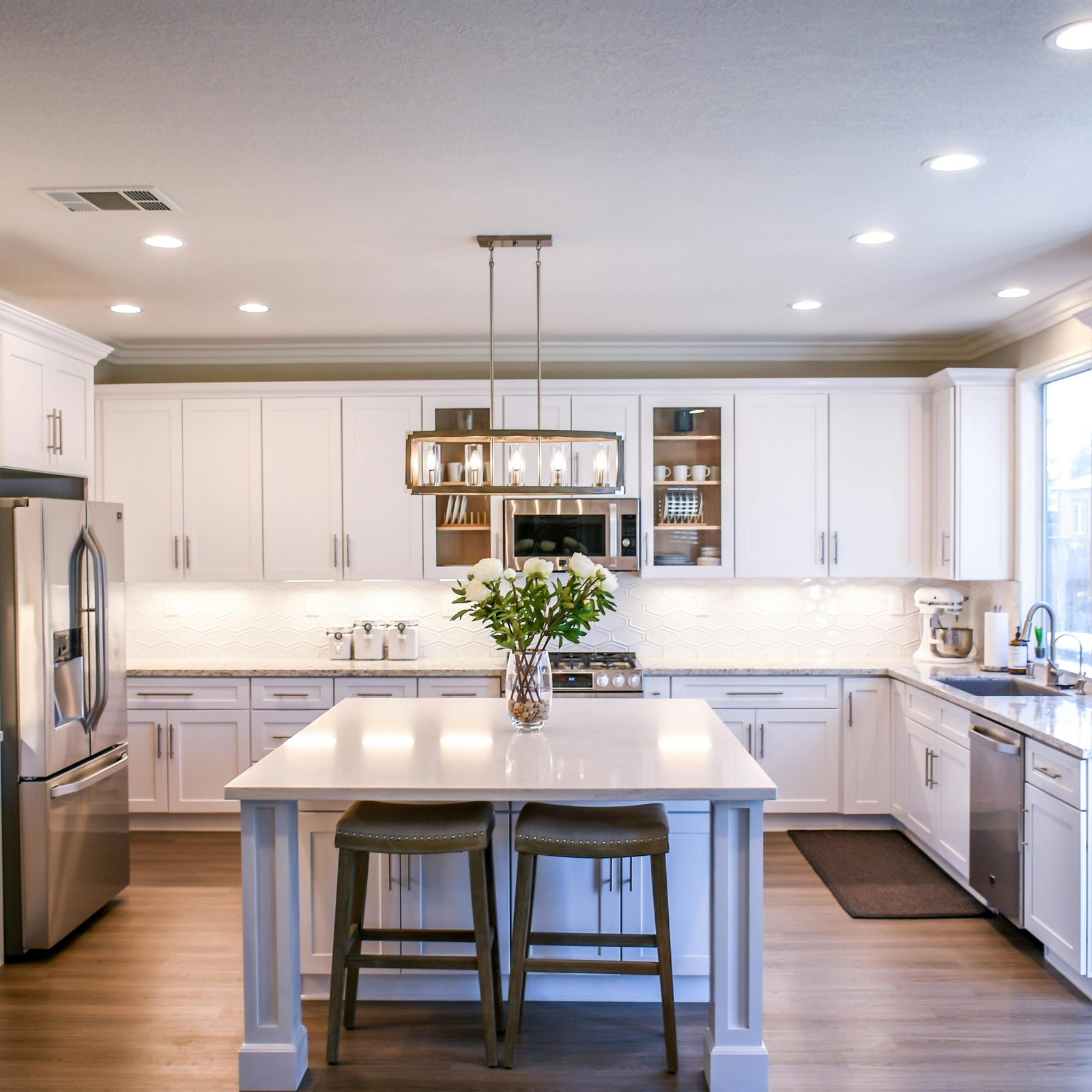Last Updated on November 21, 2025 by teamobn
Remodeling isn’t just about new finishes or trendy designs — it’s about creating a home that works better for your life while increasing its long-term value. Every homeowner dreams of a house that’s both beautiful and practical, but not every project delivers the same return. The key to successful remodeling isn’t how much you spend — it’s how smartly you plan.
A well-executed remodel can improve energy efficiency, safety, and comfort, all while raising resale potential. Whether you’re refreshing a single room or planning a full-scale renovation, thinking strategically about what adds the most long-term value is the difference between a short-term upgrade and a lasting investment.
Contents
- 1 Planning with Purpose
- 2 Kitchen and Bathroom Upgrades That Pay Off
- 3 Exterior Remodeling That Protects Value and Safety
- 4 Remodeling for Energy Efficiency and Long-Term Savings
- 5 Materials and Craftsmanship — The Foundation of Lasting Quality
- 6 Cost vs. Value — Where to Invest
- 7 Financing and Budget Planning
- 8 Hiring the Right Team
- 9 Homeowner Q&A: Planning Your Remodel
- 10 The Bottom Line
Planning with Purpose
Every great remodeling project starts with a solid plan. Homeowners who invest time in early design and budgeting avoid costly surprises later. Before choosing materials or colors, step back and define your priorities.
Do you need more living space? Are you updating outdated systems, improving efficiency, or boosting curb appeal? Each decision affects both comfort and resale value.
If you’re planning a major renovation — like adding a room, expanding a kitchen, or removing load-bearing walls — hiring an architect early is a smart move. It helps you visualize the final layout, coordinate structural changes, and ensure plans meet local building codes. In many states, architectural drawings are also required to obtain permits for larger remodeling projects.
An experienced home renovation contractor in New Jersey explains that homeowners should make this decision early. “When you’re reconfiguring layouts or opening up structural walls, an architect not only improves accuracy but also prevents costly mistakes later,” the contractor notes.
Experts also emphasize breaking big remodeling projects into manageable phases — tackling structural and safety updates first, then focusing on finishes and aesthetics. Even modest upgrades can significantly increase value when they’re part of a well-organized plan.
When planning, visualize your home’s flow and functionality. If your kitchen feels cramped, consider removing a non-load-bearing wall or improving natural light before expanding square footage. Sometimes the best remodeling results come not from adding more space, but from reimagining what you already have.
Kitchen and Bathroom Upgrades That Pay Off
When it comes to remodeling for resale, kitchens and bathrooms consistently top the list. These spaces influence buyers’ first impressions — and they’re the rooms homeowners use most.
Simple upgrades like new countertops, modern fixtures, or LED lighting can instantly refresh dated interiors. Energy-efficient appliances and water-saving fixtures not only appeal to eco-conscious buyers but also lower monthly utility bills.
Think functionality first: add storage, improve lighting, and choose durable finishes that can withstand daily wear. A remodeling project that balances style and practicality adds tangible long-term value — and years of enjoyment.
For families, adding double vanities or a walk-in shower can make daily routines smoother. In kitchens, opt for layouts that encourage connection — such as an island with seating or an open plan linking dining and cooking areas. Good design isn’t just about appearance; it’s about how people move and interact within the space.
Exterior Remodeling That Protects Value and Safety
Exterior remodeling isn’t just about looks; it’s about protection. The outside of your home is constantly exposed to weather, sunlight, and moisture — all of which can slowly damage finishes. Refreshing exterior surfaces through new paint, updated siding, or improved weatherproofing enhances curb appeal and prevents costly structural issues such as water infiltration or wood rot.
Cracked driveways or uneven walk paths can also hurt curb appeal and create safety hazards, especially in climates with freeze-thaw cycles that cause concrete to shift. Across many American cities — including New York, Chicago, and Los Angeles — homeowners are legally responsible for maintaining sidewalks and pathways adjacent to their property. Failing to repair damaged concrete can lead to fines or even liability for injuries.
According to a sidewalk contractor in NYC, regular inspections and timely repairs prevent small cracks from becoming major replacements. Keeping driveways and pathways clean, level, and well-drained protects your investment while improving safety for family and guests.
Remodeling for Energy Efficiency and Long-Term Savings
Energy-efficient remodeling delivers returns in comfort and cost savings. Upgrading insulation, replacing drafty windows, or switching to high-efficiency HVAC systems can reduce energy bills by up to 30 percent annually, according to the U.S. Department of Energy.
Even smaller updates — like weatherstripping doors or installing smart thermostats — make a noticeable difference. Modern buyers increasingly prioritize sustainability, meaning energy-focused remodeling projects can give your property a competitive edge.
If your budget allows, consider solar panels, radiant heating, or cool roofing materials. They reduce operating costs and reinforce your home’s long-term environmental performance. Over time, these investments can more than pay for themselves.
Materials and Craftsmanship — The Foundation of Lasting Quality
The materials you choose during remodeling define how well your home ages. Cheap finishes might look appealing at first but often fail under everyday wear. Quality cabinetry, solid-core doors, and well-installed flooring add not just beauty but durability.
When selecting materials, think in decades, not years. A well-built hardwood floor or quartz countertop can outlast multiple design trends. Likewise, professional craftsmanship — straight tile lines, even finishes, clean joints — makes every remodel look intentional and high-end.
Home inspectors and buyers quickly recognize quality work. A home with consistent craftsmanship signals careful ownership and commands a higher resale price.
Smart Home Integration
Technology is now a key element of modern remodeling. Smart thermostats, automated lighting, and security systems enhance comfort while saving energy. Integrating these features during remodeling is easier and more cost-effective than adding them later.
Voice-activated controls and home monitoring systems not only offer convenience but also increase perceived value among younger buyers who expect tech-ready homes. When choosing smart features, focus on energy management and safety rather than novelty gadgets — these deliver measurable returns.
Cost vs. Value — Where to Invest
Not all remodeling projects offer equal returns. According to national Cost-vs-Value reports, homeowners often recoup:
- 60–75% on mid-range kitchen remodels
- 55–65% on bathroom renovations
- Up to 90% on exterior improvements such as new siding or garage door replacements
The key is balancing what enhances your lifestyle with what increases resale appeal. Avoid over-customization in spaces that future buyers might view differently, and focus instead on upgrades that universally improve comfort and efficiency.
If resale is a few years away, prioritize structural integrity, roof condition, and energy efficiency before purely cosmetic projects. Buyers care more about long-term maintenance savings than short-lived aesthetic trends.
Financing and Budget Planning
A realistic budget is essential for successful remodeling. Always allocate 10–15% for unexpected costs — hidden plumbing issues, structural surprises, or material delays.
For large projects, explore financing options such as home equity loans or renovation mortgages. Many lenders now offer green remodeling incentives, rewarding homeowners who incorporate energy-efficient systems.
Before signing any agreement, review contracts carefully and ensure that all materials, deadlines, and payment milestones are clearly stated. A transparent financial plan reduces stress and keeps everyone accountable.
Hiring the Right Team
Choosing the right remodeling team can make or break your project. Always verify licenses, insurance, and references before signing a contract. Experienced local contractors understand regional building codes and neighborhood expectations, helping projects move forward smoothly.
A reliable contractor doesn’t just perform the work — they guide you through each stage, offering advice on design, materials, and timelines. Think of your remodeling team as partners shaping your home’s future. Their expertise ensures you achieve both visual appeal and long-term durability.
Homeowner Q&A: Planning Your Remodel
Q: What’s the best first step before remodeling?
A: Define your goals. Determine whether you’re remodeling for function, comfort, or resale value. Prioritize updates that make your home safer and more efficient.
Q: How can I keep my remodeling project on budget?
A: Get multiple estimates, set a clear scope of work, and include a 10–15% contingency fund for unexpected expenses. Avoid changing materials mid-project.
Q: How often should the exterior be updated?
A: Every 7–10 years for repainting or minor siding repairs; sooner if you live in areas with harsh weather. Regular exterior maintenance preserves value and avoids large-scale replacements later.
Q: What upgrades offer the best long-term returns?
A: Energy-efficient windows, updated kitchens and baths, and exterior improvements consistently deliver the highest ROI.
The Bottom Line
Smart remodeling is about balance — combining practical upgrades with personal touches that reflect your lifestyle. A successful project goes beyond aesthetics: it improves comfort, boosts efficiency, and protects your investment for years to come.
Remodeling done right doesn’t just change how your home looks; it transforms how you live in it. With careful planning, quality materials, and experienced professionals, every improvement — big or small — adds lasting value to your home and peace of mind to your everyday life.






